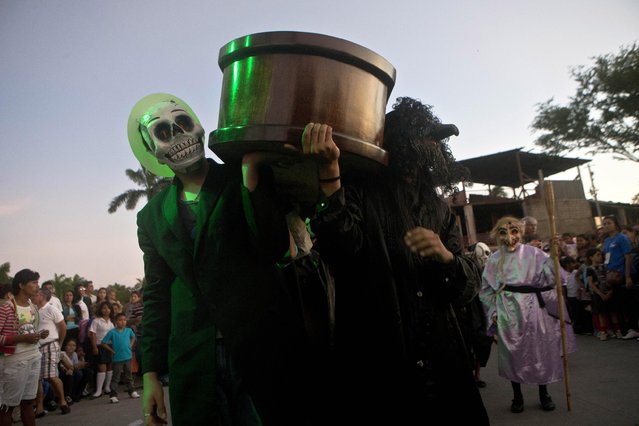
Young men wearing masks to represent mythic characters of Nicaraguan legends known as “Aguizotes”, serve as pallbearers at a symbolic burial of violence, as part of the International Poetry Festival of Granada, in Granada, Nicaragua, Wednesday, February 18, 2015. Organizers said more than 100 poets from around the world are expected to participate in the week-long festival. (Photo by Esteban Felix/AP Photo)
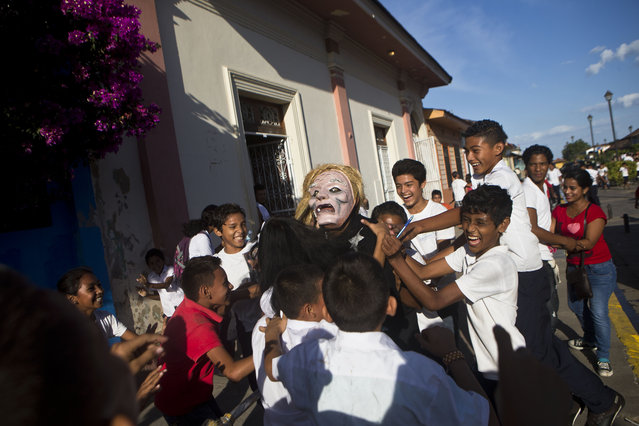
Children playfully accost a man dressed as a mythic character of Nicaraguan legend known as an“Aguizote”, during a symbolic burial of violence, as part of the International Poetry Festival of Granada, in Granada, Nicaragua, Wednesday, February 18, 2015. (Photo by Esteban Felix/AP Photo)
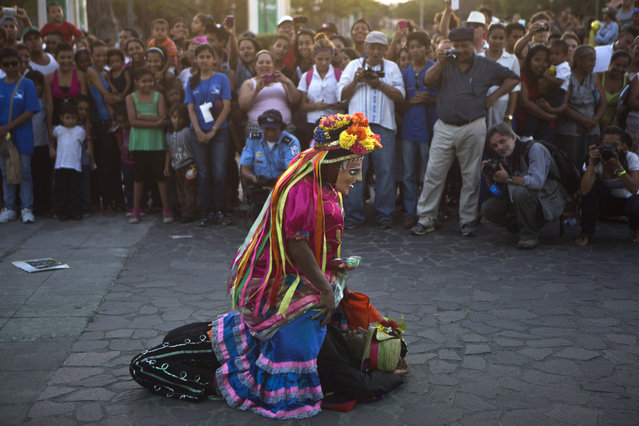
Traditional dancers perform, “El Viejo y La Vieja”, or “The Old Man and the Old Lady”, dance, before the start of a symbolic burial of violence, as part of the International Poetry Festival of Granada, in Granada, Nicaragua, Wednesday, February 18, 2015. (Photo by Esteban Felix/AP Photo)
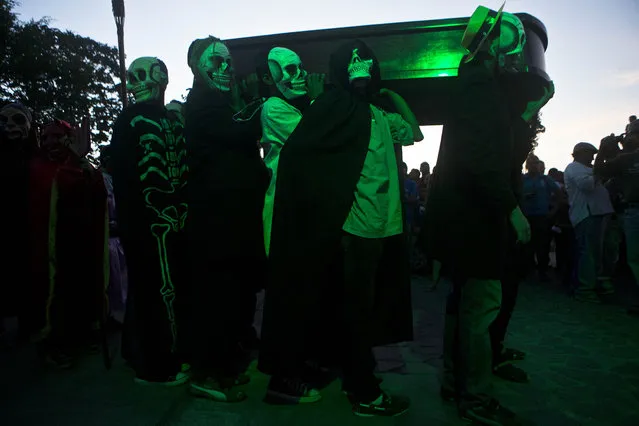
Young men wearing masks to represent mythic characters from Nicaraguan legends known as “Aguizotes”, serve as pallbearers at a symbolic burial of violence, as part of the International Poetry Festival of Granada, in Granada, Nicaragua, Wednesday, February 18, 2015. (Photo by Esteban Felix/AP Photo)
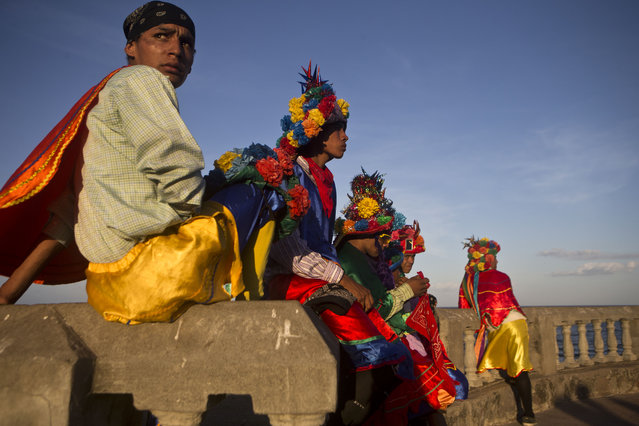
Folkorico dancers sit on a breakwater after their performance to wait for the start of a symbolic burial of violence, as part of the International Poetry Festival of Granada, in Granada, Nicaragua, Wednesday, February 18, 2015. (Photo by Esteban Felix/AP Photo)
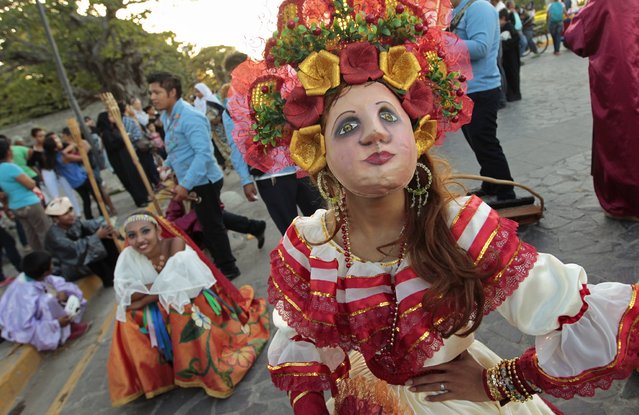
Dancers take part in the International XI Festival of Poetry in Granada February 18, 2015. (Photo by Oswaldo Rivas/Reuters)
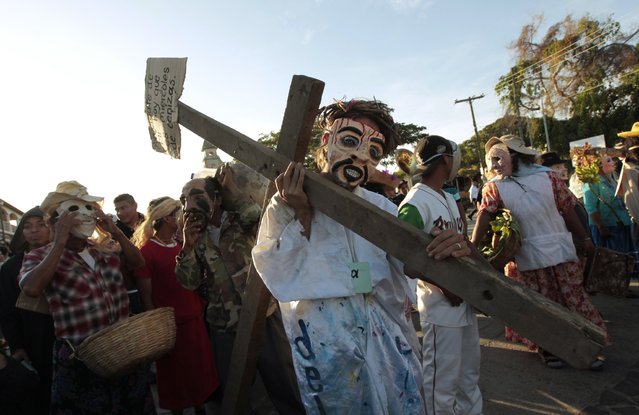
Dancers take part in the International XI Festival of Poetry in Granada February 18, 2015. The theme of symbolically “burying” violence against women will be addressed during the event, with some 110 poets from 54 countries expected to attend, organisers said. (Photo by Oswaldo Rivas/Reuters)
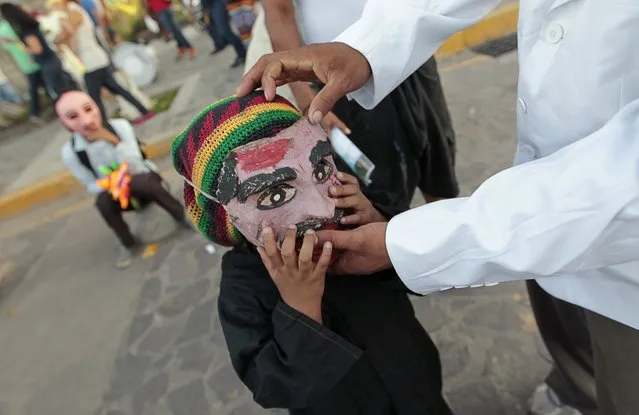
A young dancer dons a mask during the International XI Festival of Poetry in Granada February 18, 2015. (Photo by Oswaldo Rivas/Reuters)
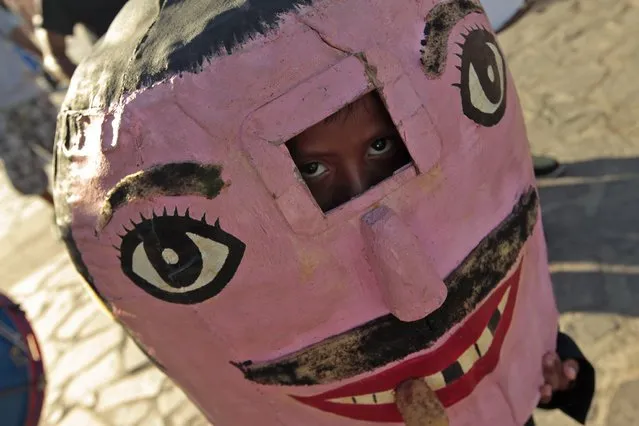
A boy takes part in the International XI Festival of Poetry in Granada February 18, 2015. (Photo by Oswaldo Rivas/Reuters)
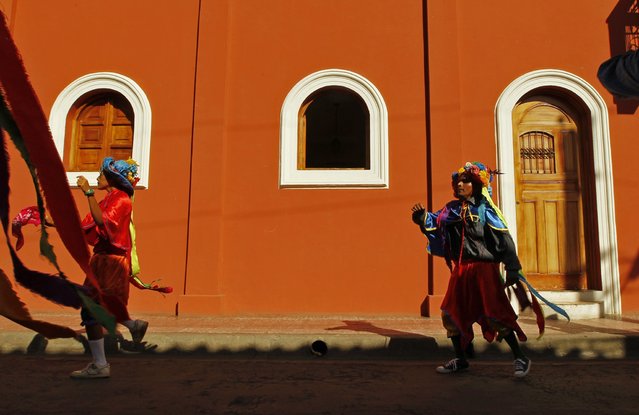
Dancers take part in the International XI Festival of Poetry in Granada February 18, 2015. (Photo by Oswaldo Rivas/Reuters)

Youth take part in the International XI Festival of Poetry in Granada February 18, 2015. (Photo by Oswaldo Rivas/Reuters)
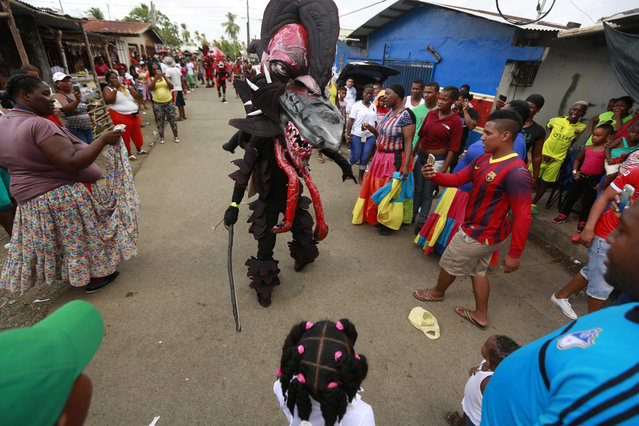
A man dressed in a devil costume confronts a reveler during the Devils and Congos carnival ritual, in Nombre de Dios, Panama, Wednesday, February 18, 2015. The Ash Wednesday ritual involves “devils” dancing through the streets in the guise of looking for and scaring “sinners” among the merry residents who have been partying for four days. On the final day of their festivities the residents work to avoid being caught by a devil. The celebration dates to colonial times in which devils represented the Spanish conquerors and the 'Congos' represented escaped African slaves. (Photo by Arnulfo Franco/AP Photo)
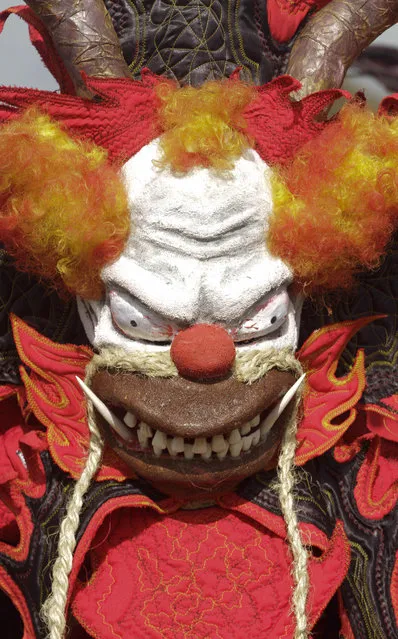
A man dressed in a devil costume with a scary clown face takes part in the Devils and Congos carnival ritual, in Nombre de Dios, Panama, Wednesday, February 18, 2015. (Photo by Arnulfo Franco/AP Photo)
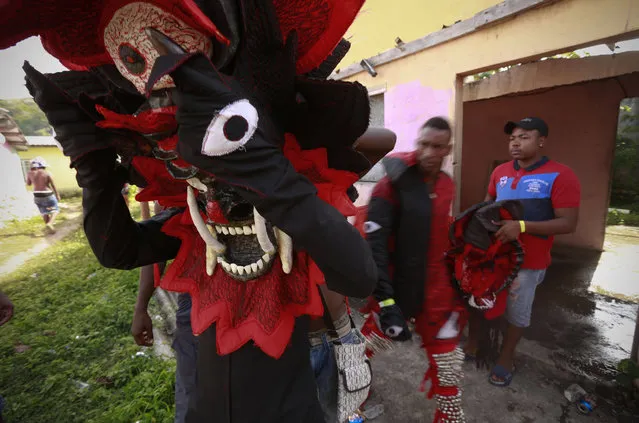
A man puts on his mask as he prepares for the Devils and Congos carnival ritual, in Nombre de Dios, Panama, Wednesday, February 18, 2015. (Photo by Arnulfo Franco/AP Photo)
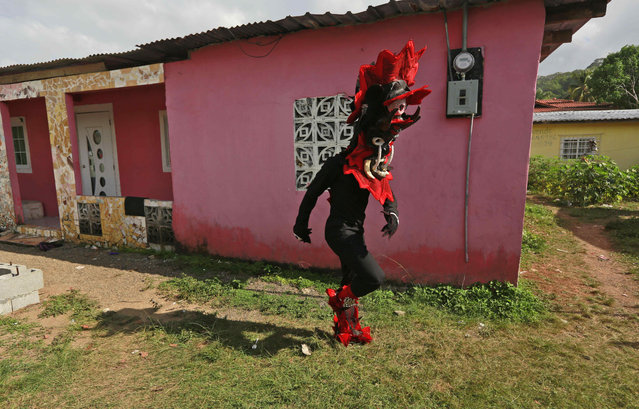
A man dressed in a devil costume walks home to take a break from the Devils and Congos carnival ritual, in Nombre de Dios, Panama, Wednesday, February 18, 2015. (Photo by Arnulfo Franco/AP Photo)
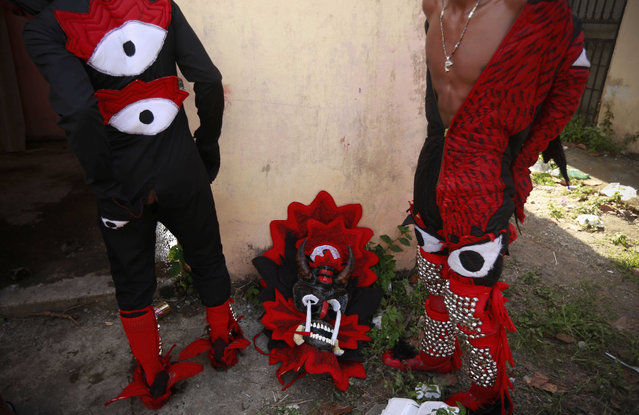
Two men prepare for the Devils and Congos carnival ritual, in Nombre de Dios, Panama, Wednesday, February 18, 2015. (Photo by Arnulfo Franco/AP Photo)
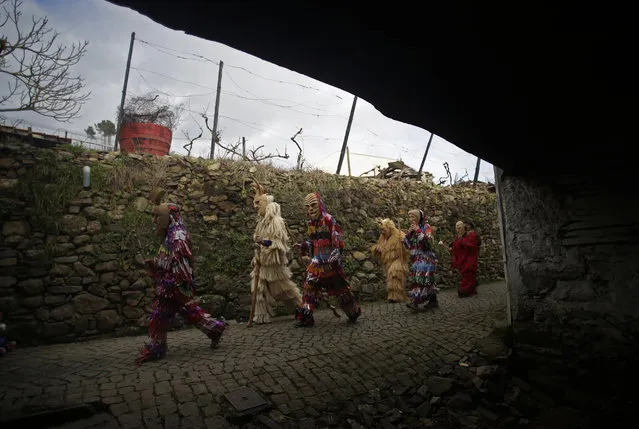
In this photo taken on Saturday, February 14, 2015 revellers dressed in local Carnival traditional costumes parade during Carnival festivities in Lazarim, northeastern Portugal. (Photo by Francisco Seco/AP Photo)
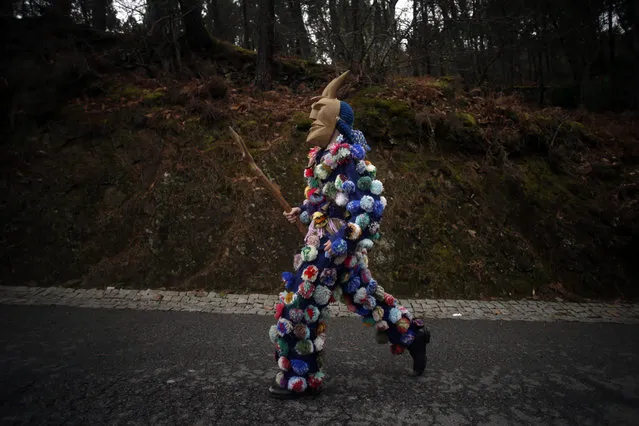
In this photo taken on Sunday, February 15, 2015 a man dressed in local Carnival traditional costume runs as he parades with others during Carnival festivities in Lazarim, northeastern Portugal. While Rio de Janeiro may boast the world's most famous carnival, the festive period of masquerades and wild and colorful costumes that precedes the Christian religious season of Lent is also a permanent and popular fixture for celebration in Spain and Portugal, with each country having its own strange and unique way of doing it. Portugal's most famous carnival takes place in the north-central town of Lazarin, with its pagan “careto” ritual of masked young men dressed in colored woolen quilts and donning brass, leather or wooden masks as they dance and chase local people – especially young women – through the streets, trying to scare them by making lots of noise and jingling bells on their backs. (Photo by Francisco Seco/AP Photo)

In this photo taken on Sunday, February 15, 2015 a girl runs away from a “Mamuxarro” during the carnival, in the small town of Unanu, northern Spain. In the northern Spanish ancient village of Unamu, people dress up as “Mamuxarro”, folkloric figures in white with a red sash and a metal mask to cover their faces as they pursue townsfolk with sticks. According to custom, their “victims” (usually young women) must kneel and kiss the mamuxarro’s knee after he makes the sign of the cross on their forehead. (Photo by Alvaro Barrientos/AP Photo)

In this photo taken on Saturday, February 14, 2015 a man, covered in oil and soot representing the devil, smokes a cigarette as he gets ready for the carnaval in the small village of Luzon, Spain. In Spain's central town of Luzon, men covered in oil and soot wear bull horns and cowbells to represent the devil. Records of Luzon's carnival date as far back as the 14th century although it is believed to be much older. (Photo by Andres Kudacki/AP Photo)

In this photo taken on Tuesday, February 17, 2015 a “Momotxorro”, wearing typical carnival dress, walks to take part in a parade in Alsasua, northern Spain. Up north in Alsasua, Spain, half-man, half-bull figures known as Momotxorros smear their face as if with the blood of a sacrificed animal. Wearing horns and and red-stained, white sheets, they roam the town roaring fiercely and brandishing sticks. (Photo by Alvaro Barrientos/AP Photo)

In this photo taken on Tuesday, January 27, 2015 Joaldunaks, some to call them “Zanpantzar”, take part on the Carnival between of the Pyrenees villages of Ituren and Zubieta, northern Spain. The Pyrenees villages of Ituren and Zubieta stage one of Europe’s most ancient carnivals – dating from Roman times – where residents dress up as figures known as “Joaldunak”, – or cowbells – and parade the streets with sheepskins around the waist and shoulder, conical caps and cowbells on their back. (Photo by Alvaro Barrientos/AP Photo)

In this photo taken on Saturday, February 14, 2015 revellers dressed in Carnival traditional costumes dance and jump as they parade during Carnival festivities in Lazarim, northeastern Portugal. (Photo by Francisco Seco/AP Photo)

In this photo taken on Tuesday, February 17, 2015 revellers dressed in traditional costumes run around a burning effigy of a traditional figure during annual Carnival festivities, in Podence, northeastern Portugal. (Photo by Francisco Seco/AP Photo)

In this photo taken on Tuesday, February 17, 2015 a young “Momotxorro” prepares his typical dress to takes part in the carnival, in Alsasua, northern Spain. (Photo by Alvaro Barrientos/AP Photo)

In this photo taken on Sunday, February 15, 2015 a group of young girls react next to a “Mamuxarro” during the carnival, in the small town of Unanu, northern Spain. (Photo by Alvaro Barrientos/AP Photo)

In this photo taken on Tuesday, January 27, 2015 Joaldunaks, some to call them “Zanpantzar”, take part on the Carnival between of the Pyrenees villages of Ituren and Zubieta, northern Spain. (Photo by Alvaro Barrientos/AP Photo)

In this photo taken on Tuesday, January 27, 2015 Joaldunaks, also called “Zanpantzar”, eat in a restaurant on their way to take part on the Carnival between of the Pyrenees villages of Ituren and Zubieta, northern Spain. (Photo by Alvaro Barrientos/AP Photo)
22 Feb 2015 10:51:00,
post received
0 comments
